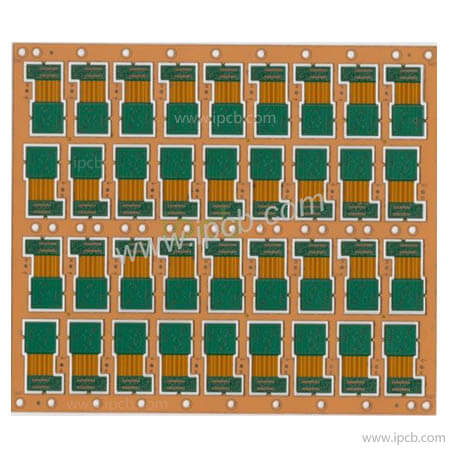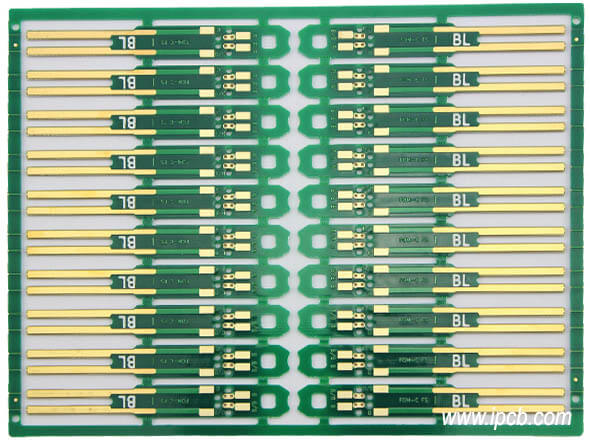Representative use cases of robots:
1. Six-axis multi-joint robot is used for AOI inspection process
Traditional AOI scanning machines rely on manual loading, turning and unloading. One person guards the two machines, doing repeated monotonous movements every day, and the newly produced circuit board will emit a pungent smell to the human body. Bringing certain damage, the infrared light emitted by the AOI scanning machine is also an invisible killer. Let's use a six-axis multi-joint robot to replace the workers as the loading, flipping and unloading of the two AOIs. Each shift can complete the retracting and unloading of more than 700 PCB hard boards, and the summed power can reach 1 piece/min ( Including AOI machine scan time). If the loading and unloading transportation line cooperating with the retractable board machine can be further connected to the AGV for fixed line transfer, the fully automated production of the up and down process can be completed.
2. SCARA robot is used for circuit board coil inspection process
At present, there are very few complete detection equipment for multi-layer board coil short circuit in the market. Most of the detection equipment rely on manual labor. PCB boards with large apertures are manually placed on the detection equipment and then opened for testing. PCB boards with small apertures Need to manually hold the equipment (probe) to test each coil. We can use SCARA robots to complete the loading and unloading and aligning of cooperative inspection equipment, and complete the inspection of all coils of large-aperture boards at one time; for small-aperture boards, we use SCARA equipment to perform end-fixed probes and visually locate them., Use the probe to detect each coil, our equipment also effectively prevents the false detection due to the small or large diameter of the coil during manual operation. Compared with manual operation, it can significantly advance the detection and measurement power and prevent quality problems caused by missed detection.
3. DELTA robot is used in the cartoning process of small circuit board products
The existing FPCtrays are manually picked up one by one and placed in the blister tray. Because the FPCis soft and thin, it is inconvenient to pick up, so the power will be greatly reduced. Delta800 plus a set of visual system can be removed from the mess Pick the qualified FPC from the pile of FPCand place it in the blister tray according to the requirements, which is not inferior to manual. His speed can reach 60 pieces/min, which can completely replace manual sorting and loading.

The advantages of industrial robots in the PCB profession instead of labor
1. Reduce labor, speed up work cycle, and advance work power. The robot can complete high-speed repetitive operations, which can be much higher than the manual work cycle, and then bring a substantial increase in work power and a reduction in labor costs and processing costs.
2. Advance the operation accuracy and advance the product quality. The robot can use programming and vision systems to achieve accurate positioning and repeat accuracy, which effectively advances the quality of products.
3. Prevent potential threats to workers' health and safety from the working environment, and save investment in environmental safety.
4. Reduce power and quality degradation and incident rate caused by repeated and monotonous processes on workers' conditions;
5. Optimize the work process and reduce the work space.
6. Effectively reduce the material consumption rate.
7. It can work continuously for 24 hours and work in a dark light environment;
8. It can make the production process flexible. In the future, the PCB profession will show more and more small-batch orders. The use of industrial robots can greatly advance the flexibility of production and complete the quick delivery of orders.
9. The advancement of brand image and reputation. The application of industrial robots enables PCB manufacturers to further advance their automation level, and promotes the advancement of product quality, production power, cost control, and response capabilities, and advances the overall competitiveness of manufacturers in the profession.
Industrial robots in the PCB career application prospects
Now the application of industrial robots in the PCB profession has just started, and it is still facing many problems that need to be addressed. Many working lines of PCB industry are non-standard products. In the process of robot application, they are subject to the constraints of the existing working space and the original equipment capabilities. Faced with the influence of different PCB board material elements, it is necessary to consider the use of various sensors to move forward. The intelligentization of robots must also consider training a group of workers for manufacturers who can operate and protect robots.

In the future, the application of industrial robots in the PCB profession will show the following trends:
1. From single station or single line application to multi-line application. It is difficult for existing PCB companies to fully introduce robots to complete automated production and need to invest a lot of funds for transformation, but they can carry out step-by-step transformation of qualified single stations and single lines, and gradually expand the scope of application after significant results are obtained.
2. From the use of simple robots to the use in combination with other intelligent equipment such as AGV. Most of the material transfer between the existing production lines is manual operation, which can be distributed and implemented to complete the orderly transfer of materials with the combination of robots and AGVs.
3. The existing factory is mainly used for partial applications, and the construction of the new factory will be planned as a whole, and the application of robots and AGVs will be directly imported.
4. The combination of industrial robots and the Internet of Things will make the production process more intelligent and flexible.
In summary, it can be foreseen that the future PCB profession will use industrial robots on a large scale.